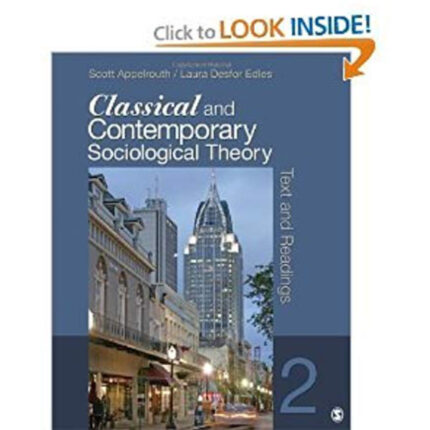Overview
Chapter 11
To Be or Not to Be a Parent: More Choices, More Constraints
11.1 Quick Quiz
1) ________ are pleasantly surprised and quietly welcoming of a child, even though they have not specifically planned a pregnancy?
A) Planners
B) Acceptance-of-fate couples
C) Ambivalent couples
D) Yes-no couples
Answer: B
Page Ref: 302
A-head: Becoming a Parent
Skill level: Understand the Concepts
Difficulty: Easy
Learning Objective: 11.1 Describe the benefits, costs, and effects of parenthood.
2) ________ have mixed feelings before and after conception and even well into the pregnancy.
A) Yes-no couples
B) Acceptance-of-fate couples
C) Planners
D) Ambivalent couples
Answer: D
Page Ref: 302
A-head: Becoming a Parent
Skill level: Know the Facts
Difficulty: Easy
Learning Objective: 11.1 Describe the benefits, costs, and effects of parenthood.
3) The ________ refers to the average number of children born to a woman during her lifetime.
A) birth rate
B) growth rate
C) maternity rate
D) total fertility rate
Answer: D
Page Ref: 306
A-head: Birthrates in the United States and Globally
Skill level: Know the Facts
Difficulty: Easy
Learning Objective: 11.2 Explain how and why birthrates are changing in the United States and globally.
4) A similarity between teen mothers and women who give birth after the age of 40 is that they both are ________.
A) less likely to be married when compared to mothers between ages 22 and 34
B) more likely to be highly educated when compared to mothers between ages 22 and 34
C) more likely to have babies with birth defects when compared to mothers between ages 22 and 34
D) less likely to have trouble conceiving when compared to mothers between ages 22 and 34
Answer: C
Page Ref: 313
A-head: Postponing parenthood
Skill level: Analyze It
Difficulty: Hard
Learning Objective: 11.4 Explain why many people are postponing parenthood and discuss the effects of such postponement.
5) Which of the following causes infertility in men?
A) chemical pollutants
B) endometriosis
C) chlamydia
D) anorexia
Answer: A
Page Ref: 314
A-head: Infertility
Skill level: Understand the Concepts
Difficulty: Easy
Learning Objective: 11.5 Identify the reasons for infertility, people’s reactions, and the available medical treatments.
6) Amanda agrees to artificially inseminate herself with Jim’s sperm as Jim’s wife, Maria, cannot conceive biologically. If Amanda gives birth to Jim and Maria’s child, she is referred to as a ________ mother.
A) surrogate
B) test-tube
C) prenatal
D) adoptive
Answer: A
Page Ref: 317
A-head: Infertility
Skill level: Apply What You Know
Difficulty: Moderate
Learning Objective: 11.5 Identify the reasons for infertility, people’s reactions, and the available medical treatments.
7) ________ is the practice of sharing information and maintaining contact between biological and adoptive parents throughout the child’s life.
A) Silent adoption
B) Assisted adoption
C) Open adoption
D) Surrogate adoption
Answer: C
Page Ref: 320
A-head: Adoption: The Traditional Solution to Infertility
Skill level: Know the Facts
Difficulty: Easy
Learning Objective: 11.6 Compare open and closed adoptions and describe transracial, same-sex, and international adoptions.
8) Which of the following is true of abortion according to demographics?
A) Abortion is seen least among white, unmarried women.
B) Abortion is most common among married Latinas.
C) The majority of abortions occur in the first 12 weeks of pregnancy.
D) The majority of abortions are performed on people who live high-income households.
Answer: C
Page Ref: 324
A-head: Abortion
Skill level: Understand the Concepts
Difficulty: Moderate
Learning Objective: 11.7 Describe the incidence of abortion, discuss the characteristics of and the reasons given by the women who abort, and explain why abortion rates have decreased.
9) How do women differ from men with regard to being child free?
A) Women with a college education and careers are more likely than their male counterparts to be child free.
B) Men are more likely to be child free than women as there has been a steep increase in work-at-home dads.
C) Married men are more likely to be child free when compared to married women.
D) Involuntarily childless women are more likely to be child free than voluntary single men.
Answer: A
Page Ref: 329
A-head: Child Free by Choice
Skill level: Analyze It
Difficulty: Hard
Learning Objective: 11.8 Explain why some people are choosing to be child free.
10) Briefly explain why people typically choose to be child free.
Answer: Demographic Variables: Child-free women tend to be those who have never married and aren’t cohabiting, have a bachelor’s degree or higher, grew up with both biological parents, and are white. Women with a college education and careers are more likely than their male counterparts to be child free. This gender gap probably reflects women’s awareness of the challenges of balancing employment and parenthood, particularly because women still have more responsibility than men for housework and child care.
Individual Choices: Some people decide not to have children because their family has a history of diseases such as breast and other cancers, early Alzheimer’s, and muscular dystrophy. Because social pressure to bear children has diminished, both women and men feel freer to focus on their own goals and interests, value their independence, and do whatever they want without worrying about raising children.
Page Ref: 329-330
A-head: Child Free by Choice
Skill level: Understand the Concepts
Difficulty: Moderate
Learning Objective: 11.8 Explain why some people are choosing to be child free.













Reviews
There are no reviews yet.